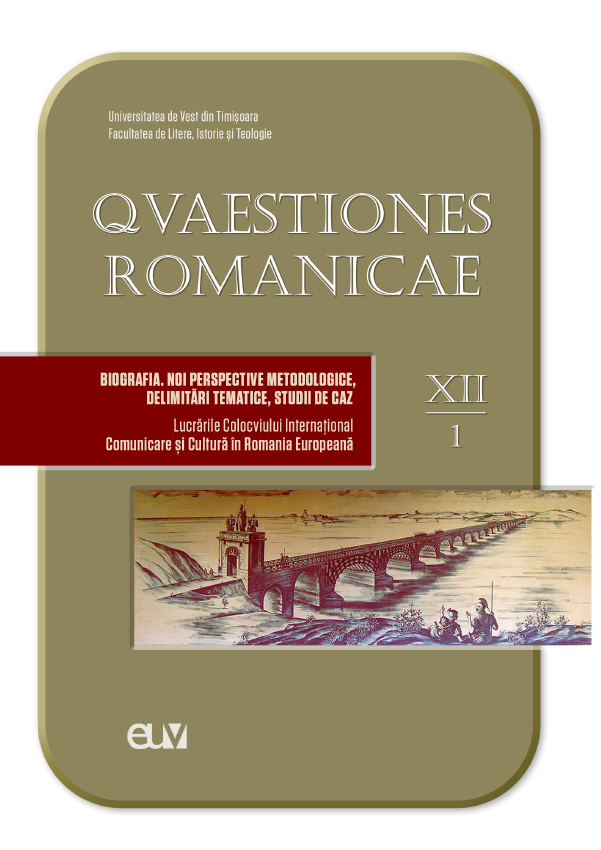Vitae Turcicae în Renaștere: de la Georgius de Hungaria la Paolo Giovio
Abstract: (Vitae Turcicae of the Renaissance: from Georgius de Hungaria to Paolo Giovio) Few periods have valued biography as much as the Renaissance, when the literary genre became inextricably linked with affirming the moral values of Humanism. In a creative process of adapting ancient models to their communicative needs, humanists transformed the relatively elitist nature of the ancient genre into a popular phenomenon, thanks in particular to schooling, printing, and the use of images. This paper examines a little-studied but extremely popular category of fifteenth and sixteenth centuries vitae that intersected with the so-called Turcica, a vast category of texts that explored alterity and the possibility of coexistence on the boundaries of opposing civilisational and political systems. It turns to two Latin texts that can be considered landmarks for this literary category: the pretended autobiography attributed to Georgius de Hungaria (Tractatus de moribus, condictionibus et nequicia Turcorum, ca 1481), and the portraits of Ottoman personalities included by Paolo Giovio in his Elogia virorum bellica virtute illustrium (1551). The two examples illustrate the reluctance of Renaissance humanists to publish biographies of Ottoman personalities, particularly those of the sultans. Instead, printers offered the public a substitute in the form of autobiographical writings attributed to captives who had fallen into Turkish bondage. The first example serves however to caution about the authenticity of such texts. The second reflects the achievement of a new stage of maturity in biographical writing during the Renaissance with Giovio’s work, namely his attempt to overcome the phase of sharp opposition between civilisations promoted by his predecessors.
Keywords: Turcica, Renaissance Humanism, Ottomans, Georgius de Hungaria, Paolo Giovio.
Rezumat: Puține epoci au prețuit biografia precum Renașterea, genul literar fiind intrinsec legat de afirmarea valorilor morale ale Umanismului. Într-un proces creativ de adaptare a modelelor antice la propriile exigențe de comunicare, umaniștii au transformat caracterul relativ elitar al genului antic într-un fenomen popular, în special grație școlii și tiparului, respectiv alăturării textului cu imaginea. Contribuția abordează o categorie puțin studiată de vitae, deși extrem de populară între secolele XV și XVI – cele care se intersectează cu așa-zisele Turcica, vastă categorie de texte care investighează alteritatea celuilalt și posibilitatea conviețuirii la limita dintre sisteme civilizaționale și politice considerate contrapuse, pornind de la două opere latine care pot fi luate drept repere pentru această categorie literară: lucrarea cu pretenții autobiografice atribuită „Captivului din Sebeș”, Georgius de Hungaria (Tractatus de moribus, condictionibus et nequicia Turcorum, cca 1481), respectiv portretele personalităților otomane incluse de Paolo Giovio în Elogia virorum bellica virtute illustrium (1551). Alăturarea celor două exemple pornește de la constatarea reticenței umaniștilor din Renaștere de a da luminii tiparului biografii ale personalităților propriu-zis otomane (a sultanilor, în special), tipografii oferind publicului un surogat al acestora, scrieri cu pretenții autobiografice atribuite unor captivi căzuți în robia turcilor. Primul exemplu pune în gardă, însă, cu privire la autenticitatea unor astfel de scrieri. Cel de-al doilea reflectă atingerea unui nou stadiu de maturitate în scrierea biografică în Renaștere odată cu opera lui Giovio, respectiv tentativa sa de a depăși faza de contrapunere acută dintre civilizații promovată de predecesorii săi.
Cuvinte-cheie: Turcica, Umanism, Otomani, Georgius de Hungaria, Paolo Giovio.
